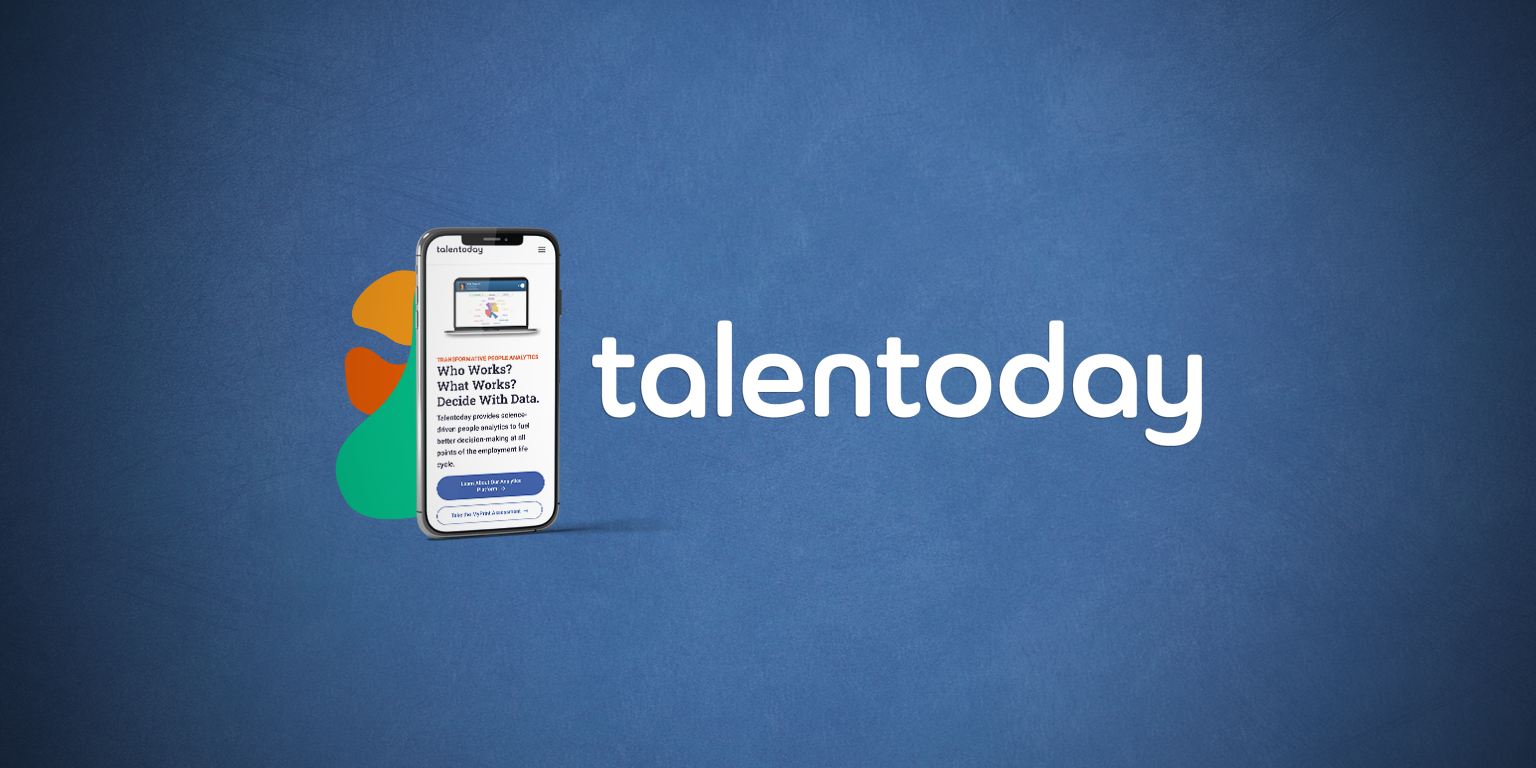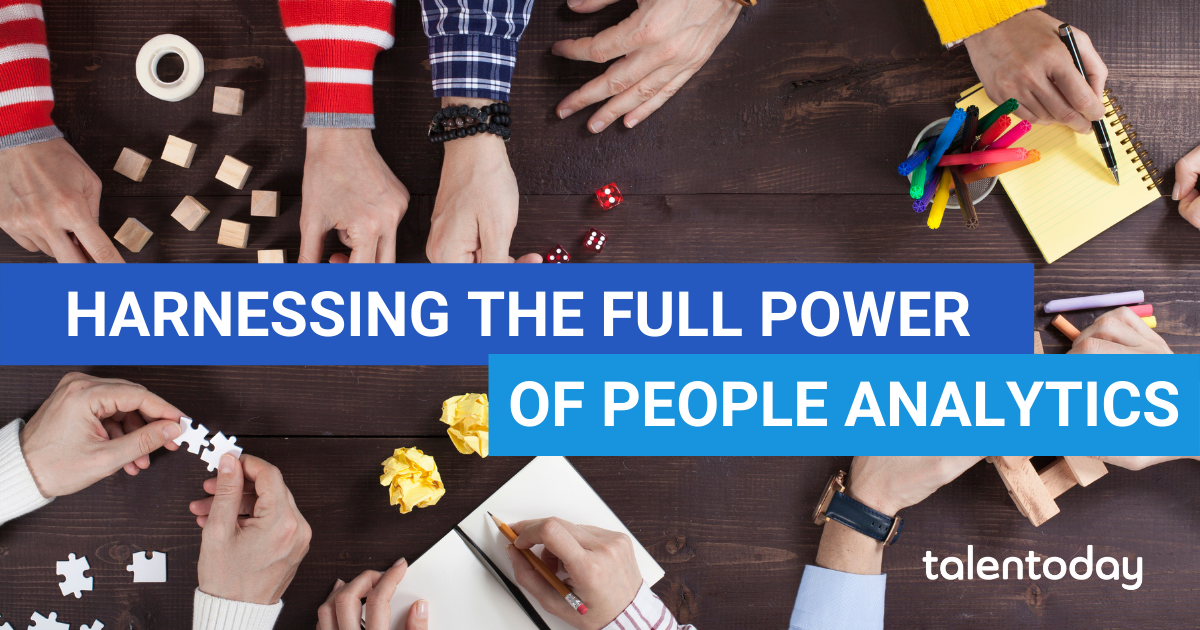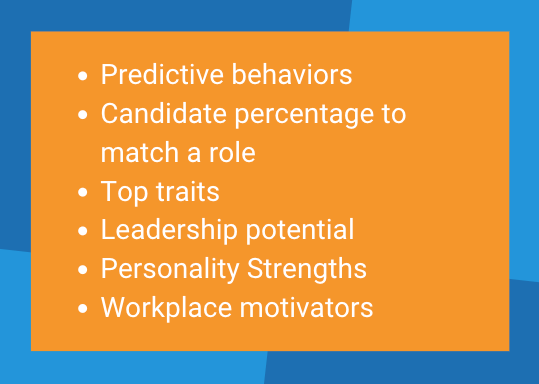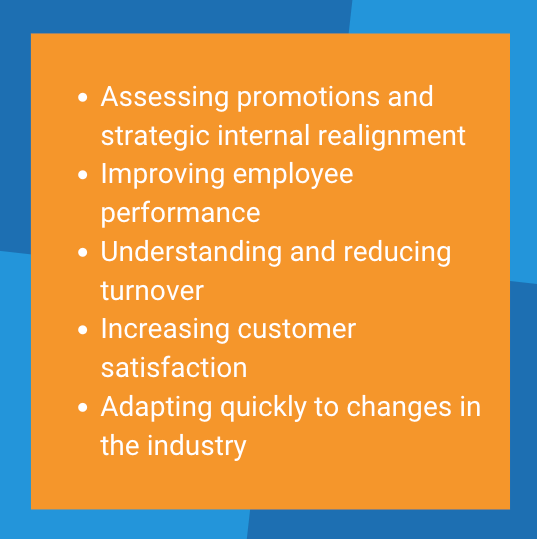Putting People First in People Analytics
From financial services to manufacturing, big data has been revolutionizing the way industries work for years now. An explosion in the volume of available information and powerful tools able to analyze and apply learnings from it all have led to more efficient and effective workplaces processes. It was only a matter of time before data-driven solutions changed the way we think about human resources, too.
Now, people analytics (PA) has completely reshaped hiring and workforce management for organizations of all shapes and sizes. In fact, big data in HR is big business. According to the Harvard Business Review, “up to 70% of executives consider the implementation of PA capabilities as a top priority and predictions are that the value of the global big data analytics market will be around $68 billion by 2025.”
But is there a hidden cost behind this shift to data-driven decision making?
People Analytics 101
MIT Sloan professor Emilio J. Castilla defines people analytics as, “a data-driven approach to improving people-related decisions for the purpose of advancing the success of not only the organization but also of individual employees.” The key in this definition is the dual impact being described; properly designed, these applications can benefit both organizations and individuals alike.
To get there, companies are tasked with analyzing countless data points. Consider all of the valuable information HR teams gather from the start of the hiring process through the duration of an individual’s employment lifecycle. This information can include but is not limited to:
- Resumes
- Interview Responses
- Soft Skills Assessments
- Performance Reviews
- Salary History
Each bit of data reveals a new portion of the picture of the complex individual behind a given job title. Add enough of these pieces together and a detailed panoramic view of an entire organization comes into focus. That’s the real power of people analytics - the potential to unlock connections within an organization previously unseen by traditional HR practices.
How to Keep the People in People Analytics
Unfortunately, there’s a flip side to companies embracing PA in a big way. When mishandled, these efforts can send the wrong messages to a workforce and - even worse - double down on biased decision making.
Here’s how to avoid the potential dehumanizing effects of applying people analytics at your organization:
- Practice data due diligence. Put bias in, get bias out - it’s as simple as that. As pointed out in, “Using People Analytics to Build an Equitable Workplace” historical data can come with years of bias already baked into it. For example, previous hiring practices or review structures may have been inherently biased against particular groups of people. Steps very well may have been taken to rectify these issues. However, your AI tools will not understand these changes when processing the data. Therefore, “while algorithms can help interpret past data and identify patterns, people analytics is still a human-centered field, and in many cases, especially the difficult ones, the final decisions are still going to be made by humans.” Understand and accept the limitations of automation upfront, then confront them with thoughtful human intervention.
- Communicate your commitment to humanity. The core of people analytics (and human resources, for that fact) is people. It’s not about cold, calculated efficiency; it’s about making work better for everyone at a basic, human level. Leaders need to communicate this overarching goal at every step of the way when implementing PA principles across an organization. Rather than boiling people down to facts and figures, express the ways in which analyzing these data points can lead to improved interpersonal relationships, personal and professional growth and, ultimately, a happier workforce.
People First
At best, the big data revolution can be interpreted as a hopeful reimagining of our future. At worst, it is a cautionary tale about what happens when we reduce our humanity to a series of data points. People analytics has the potential to positively impact the way we build and manage teams. Yet, that potential will be squandered if we fail to recognize the human beings behind the data.
Talentoday provides science-driven people analytics to fuel better decision making at all points of the employment life cycle. Learn how our MyPrint assessment can provide a deeper understanding of your employees’ personality traits, motivations and behaviors.
New Tailored Group DNA Feature Adds Personalization to Soft Skills Analysis
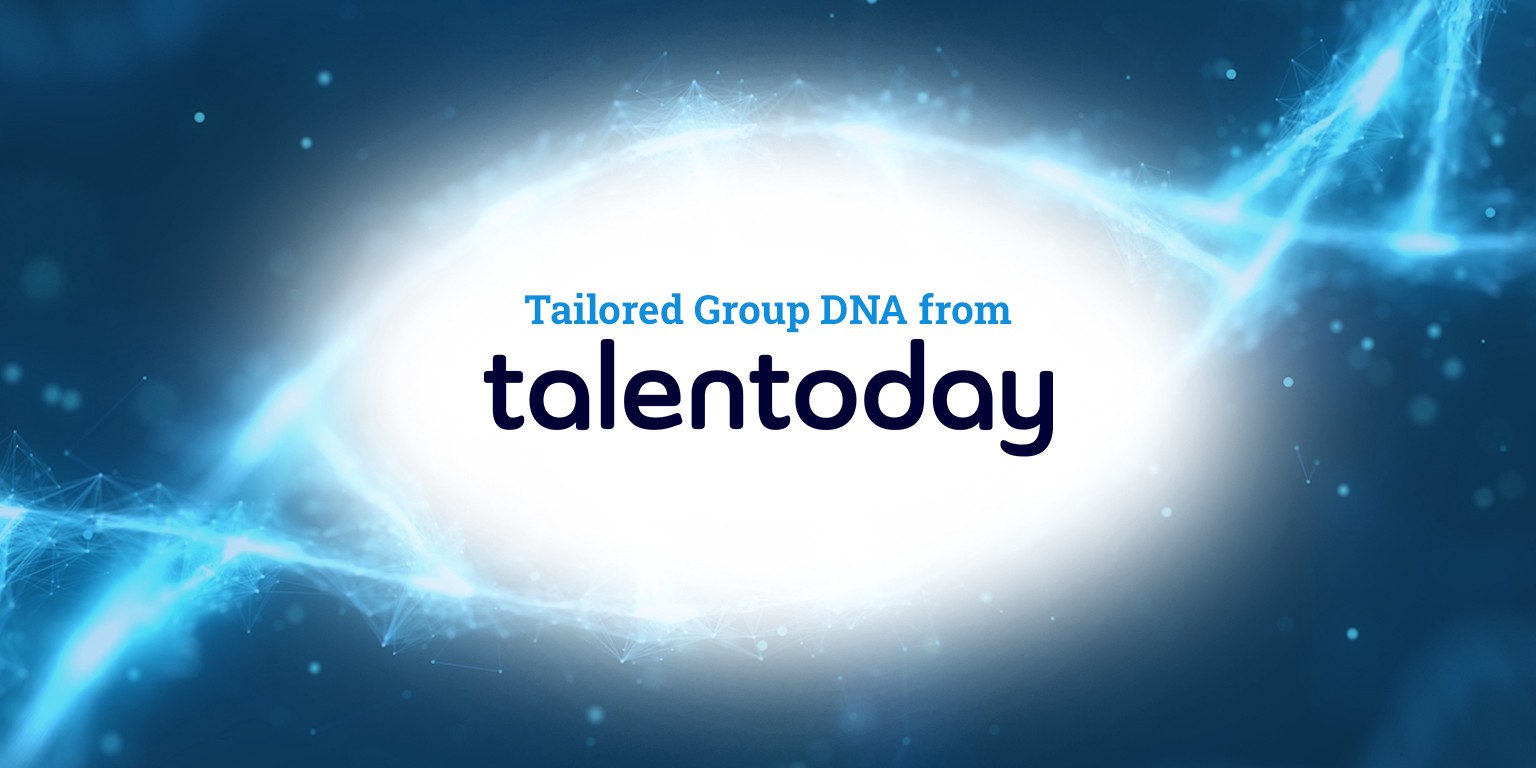
Talentoday is excited to announce the arrival of the newest feature of Talentoday Manager — Tailored Group DNA! In the last year, our team introduced Talentoday Managers to Group DNA. The idea was simple: Users needed to be able to make smarter HR decisions and maximize synergies within teams by leveraging MyPrint® soft skills data at scale.
Group DNA achieved this with two core purposes in mind: team profiling and talent matching.
- Team Profiling: Group DNA allows users to uncover the soft skills and traits that shape any distinct work group of three or more people. The result is a visual representation of what makes a group effective, and where there are skills gaps to fill.
- Talent Matching: Group DNA improves talent matching by determining the synergies within a job function by taking a sampling of members and allowing Managers to identify the predominant skills that contribute to that groups’ success. Based on that knowledge, candidates can be matched to the role against the Group DNA.
Tailored Group DNA takes this concept one step further by adding personalization options for our users. While Group DNA is a purely data-driven tool which compiles all dominant traits from a sample group of members’ MyPrint data, Tailored Group DNA allows managers to zero-in on the precise traits they may need to focus on for a particular hiring or management situation.
With Tailored Group DNA, you can now find solutions to the following questions:
- How do I leverage Talentoday’s matching algorithm without an ideal sample group to work off of?
- How can I integrate the soft skills that reflect my organization’s values into our selection process?
- How do I leverage my team’s MyPrint insights to create diversity of thought?
It’s time to put a human touch on the data that’s driving your business forward! From hiring to internal mobility, Tailored Group DNA will empower you to fill the soft-skills gaps on your team and put your expertise to good use while maintaining leveraging the scientific integrity of our Group DNA’s matching algorithm.
Interested in seeing Tailored Group DNA in action? Contact our team today to learn more about how our latest feature is changing the way teams visualize and act upon soft skills data!
Talentoday Launches New Website and Logo as U.S. Operations Expand
Talentoday is excited to announce updates to its brand, including the launch of a new website and logo, as operations expand to deepen our presence in the United States.
Talentoday was founded in Paris, France in 2012 to provide science-backed, data-driven talent insights to individuals and businesses. In 2018, Medix, a U.S.-based organization specialized in workforce solutions and recruiting skilled personnel in the Healthcare, Life Sciences, Engineering & Construction, and Technology industries, acquired Talentoday with the goal of enhancing both organizations’ service offerings. Since then, our team has grown to become a global leader in predictive people analytics, providing powerful career, team and workforce intelligence to the world.
“Talentoday has always been a purpose-driven organization, and since expanding into the U.S. market, our core purpose of empowering growth has only grown more important to the work we do,” said Talentoday and Medix CEO Andrew Limouris. “As we find new ways to help businesses and individuals unlock their true potential, our continued, strategic growth in North America will allow us to better serve our clients and community members.”
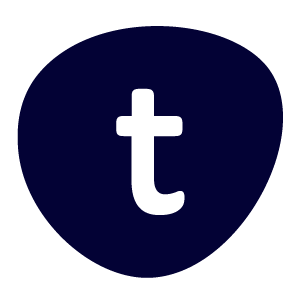
The completely redesigned logo, website and new brand elements align with significant expansion of Talentoday’s service and product offerings in 2021 and beyond, focused on supporting Corporate HR and Hiring Managers, Higher Education, HR and Coaching Firms and HR Tech Companies.
“The growth of our organization over the last few years has been invigorating, and the new look of our website and brand is designed to reflect and build upon the passion and energy that brought us here,” said Jordan McGuire, Managing Director at Talentoday. “Today, our people intelligence database includes 4+ million profiles from individuals in more than 160 countries. Despite the broad and expanding reach of our tools and technology, we are a company that measures success in people — the careers we support, the teams we build and the businesses we advise.”
Experience the new look of Talentoday and access our latest people analytics products and solutions at www.Talentoday.com.
Harnessing the Full Power of People Analytics
We all know that recruiting has inherent risk. A CareerBuilder survey found that nearly three in four employers have hired the wrong person for a position. Bad hires not only have a negative financial impact, but can reduce productivity and be a blow to company morale. Even if your initial hire is spot-on, keeping talented employees on board can be extremely challenging. That’s where people analytics comes in. It’s likely you’ve heard or read this phrase before — but what does it really mean?
People Analytics — The Short Version
HR Technologist defines people analytics as “the deeply data-driven and goal-focused method of studying all people processes, functions, challenges and opportunities at work to elevate these systems and achieve sustainable business success.” Simply put, people analytics is:
- Data driven — you need to gather data and use it
- Goal-focused — you need to know how the data will be used and what you want to improve
For human resource and staffing professionals, people analytics has the ability to transform the entire talent lifecycle, from recruitment, assessment and hiring to team building and development. McKinsey data shows that people analytics can lead to an 80% increase in recruiting efficiency and a 50% decrease in attrition. It can also help reduce bias in hiring by bringing in a diverse slate of candidates and create more inclusive workplaces by identifying discrimination.
It’s Only as Good as the Data
As with all science-driven solutions, people analytics is only as good as the data it’s being fed. While certain hard skills and experiences are easy to quantify, understanding soft skills and behavioral factors that determine lasting success requires sophisticated technology.
To get good data, you first need to identify your priorities and objectives. Are you trying to reduce the cost of candidate screenings? Improve the quality of your hires? Create a more diverse workforce? Upfront planning allows you to develop a rigorous candidate assessment, including customized interview questions, that gets to the root of each individual’s personality traits and behavioral and motivational factors. Some data points you may want to consider include:
Once the data is gathered and analyzed, it needs to be compiled in such a way that is accessible to the people that use it. For most of us, visual data representation provides a clear and concise picture that captures our attention and allows us to process the information more quickly.
How Can it Help Your Organization?
People analytics is critical for making better, more informed hiring decisions. While intuition is a valuable tool during recruiting, it shouldn’t be used in a vacuum. Instead, combining your gut instinct with science that uses algorithms and predictive analytics to develop a more accurate and complete talent profile will yield greater success.
Beyond hiring, people analytics is valuable for any area where people are involved in your business, including how you can leverage employee strengths for both the organization’s advantage and the individual’s career growth. Here are a few common examples of areas that businesses can benefit from gathering and using data throughout the employee life cycle:
It’s also important to note that people analytics should never be static. It needs to be a dynamic activity that evolves with individuals and teams as they move through the employment life cycle. The more employees and talent leaders use it, the more value and insights it delivers.
Where do I start?
If you’re looking to make a better placement, team building, and development decisions for employees and teams, assessing soft skills using people analytics software is a great place to start. To learn more about our scientifically-backed assessments, including MyPrint® and Talentoday Manager, email us at customer@talentoday.com. We believe that once you have more information about the personality and motivations of your employees, you’ll be able to make more informed decisions grounded in science.



